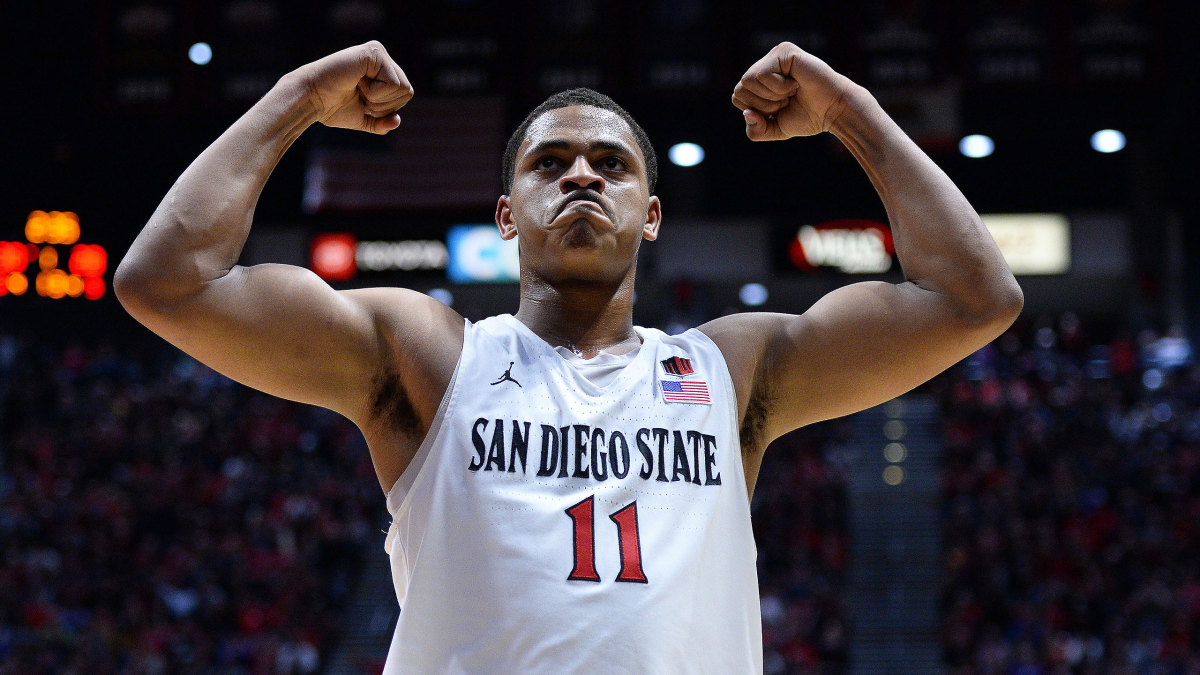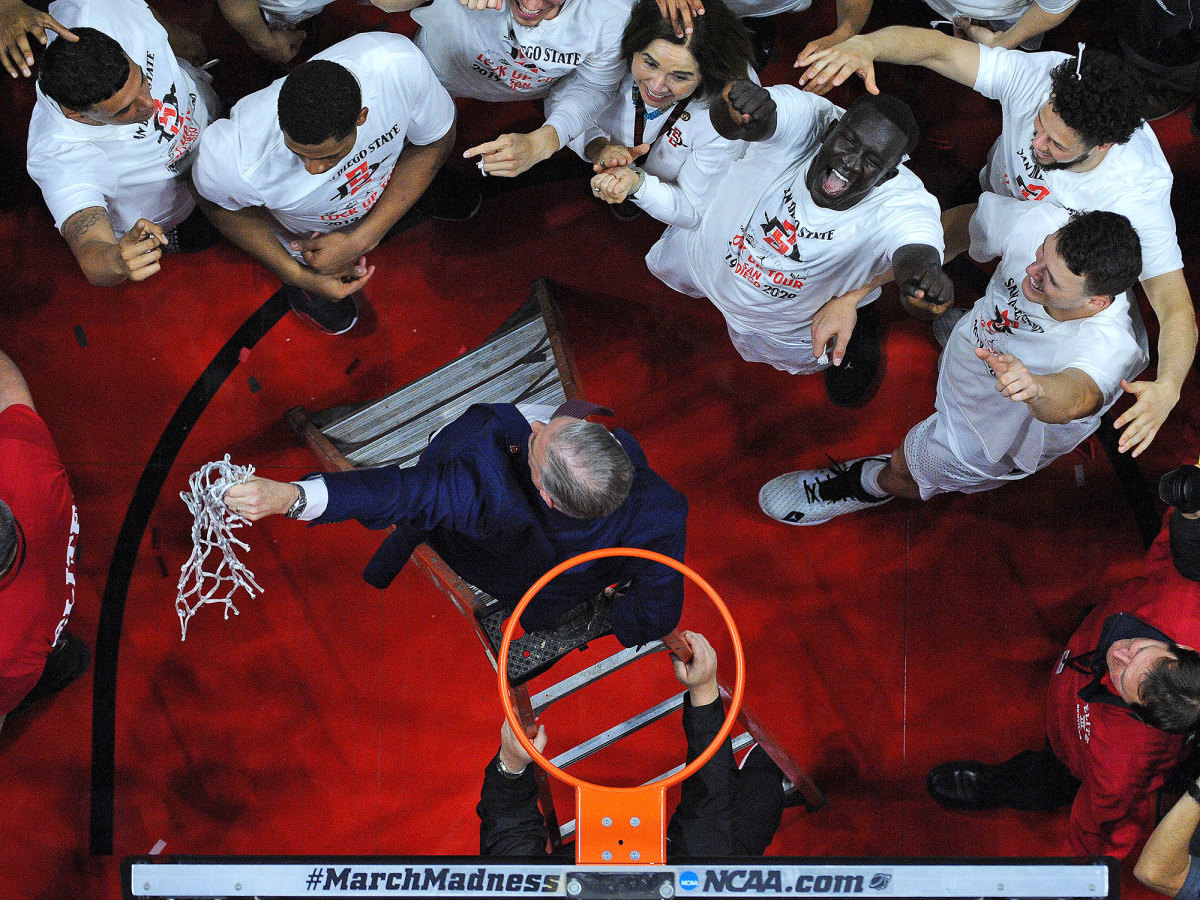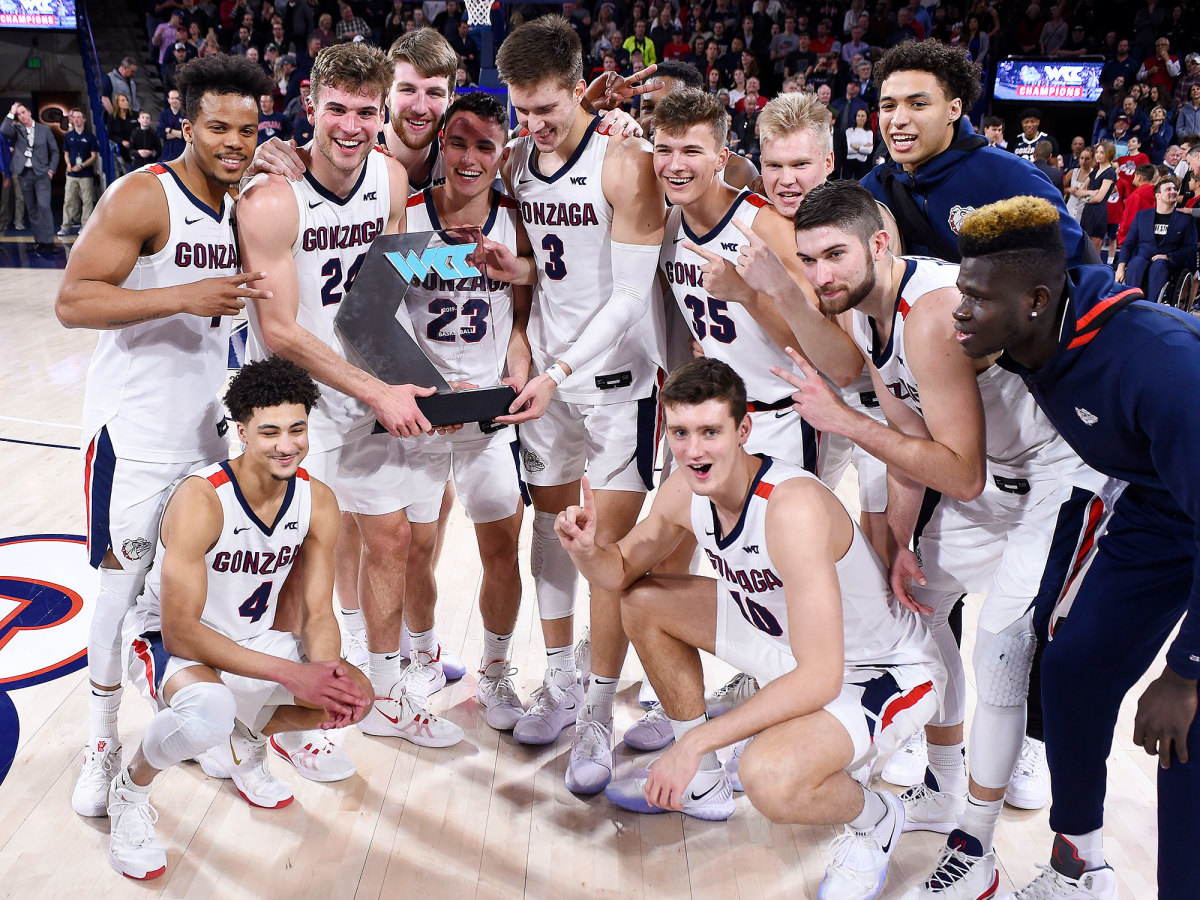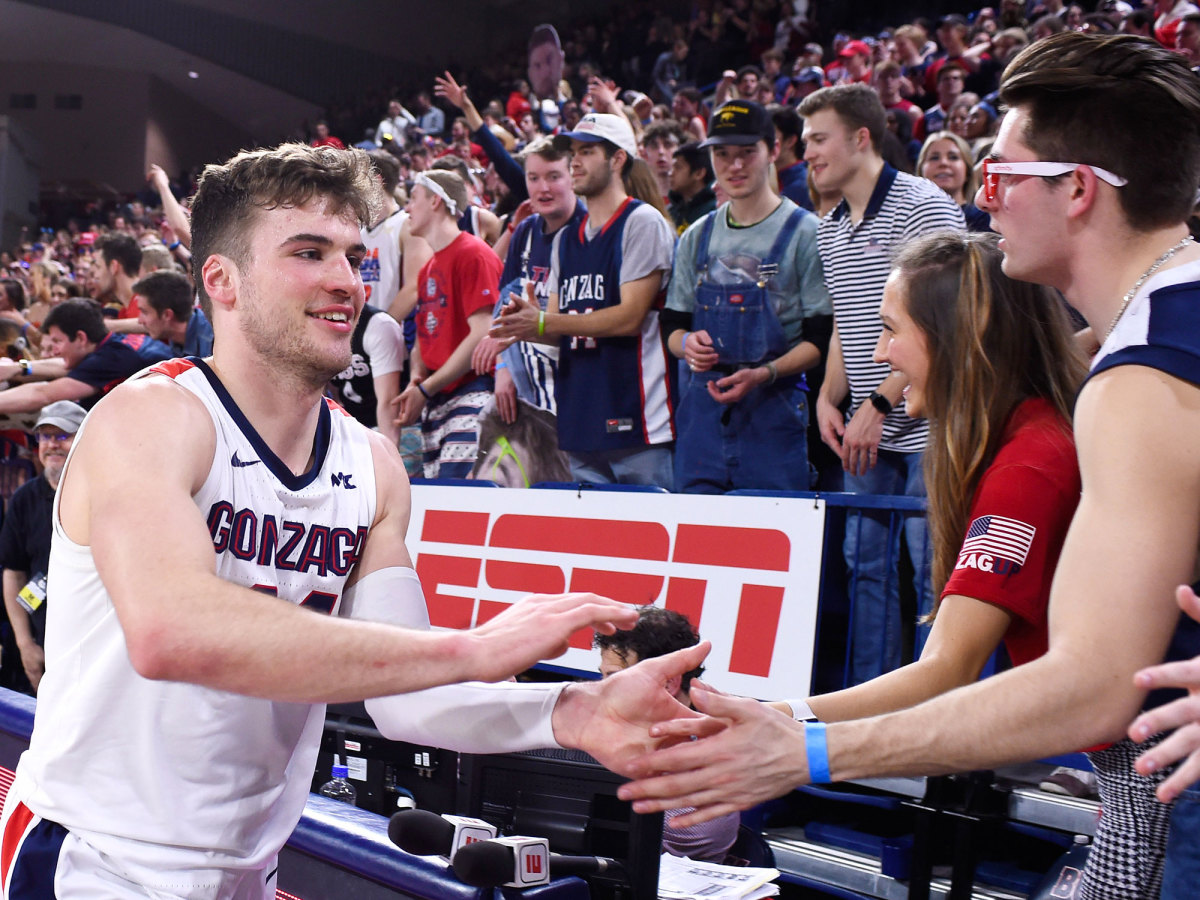West Coast, Best Coast? A Regional Shift in Power Is the Story of the 2019-20 Season
Bill Walton is on the phone, and he is loose on a rhetorical stream of consciousness. No, not a stream—a torrent. He has been asked one question—“Why is college basketball experiencing a West Coast revival?”—and he is off, unbound, tripping, time traveling, rhapsodizing, soliloquizing, Waltonizing.
He goes for 10 minutes, then 15, a Jerry Garcia improvisational riff of a response to a succinct prompt. After reeling off information about teams stretching from the coastline to the southern desert to the northern forests to the inland mountains, the hippie philosopher of the sport hits his grandiose crescendo.
“This is a joyous spiritual celebration of the greatness of life,” Walton enthuses, in his mellifluous voice. “And to have basketball be the thing that pulls everything together is a dream come true. The dream is alive!”
If you are going to write about basketball in the West, you must hear the sermon of William Theodore Walton III. You must be baptized in his font of knowledge, his wellspring of optimism. He is a true believer.
Walton was a legendary player tied to the greatest of times and teams on the Left Coast, from dominant high schooler in San Diego to pillar of the UCLA dynasty to the force behind the only NBA title won in Portland. Today he is the broadcasting free spirit who breaks all the rules of the trade while serving as an unrestrained booster for Pac-12 hoops and the entire region’s way of life. He will talk to you about low-post play, if you insist, but also about cacti and waves and woods.
“We live in the greatest place on Earth!” Walton exults. “We have the fastest-growing states in America. The players see the remarkable opportunities. This is where they’re going to want to live when they’re done playing. This is where they can get the greatest education. It’s just a harmonic convergence of the highest order.”
It is, in fact, quite a convergence. From SoCal to Spokane and permeating into the Mountain Time Zone, the West is the hub of basketball in 2020.

The spotlight shines from the grass-roots game—Sierra Canyon (Calif.) High School, led by precocious scion Bronny James, is playing to massive crowds in a national barnstorming schedule; 15-year-old San Diego point guard Mikey Williams has 1.5 million Instagram followers—to LeBron’s Lakers and Kawhi’s Clippers.
At the level between the kids and the pros, the college game is flourishing out West as well—and this is the level we’re here to discuss with the rambling Big Redhead. There is a transformational women’s player from a burgeoning powerhouse, Sabrina Ionescu of Oregon. Seven Pac-12 men’s teams could earn NCAA tournament bids, and if they all do so it would equal the most in conference history. And there are the Twin Towers of mid-major might, Gonzaga and San Diego State, a combined 57-3 to date.
If the Aztecs of the Mountain West and the Zags of the West Coast Conference both nail down NCAA tourney No. 1 seeds—which seems increasingly likely as other challengers fall by the wayside—it would be virtually unprecedented. The last time two teams from outside the putative power conferences were top in the same tournament was 1979, the first year seeding was publicly announced, and even then it’s a murky designation. The teams were Indiana State of the Missouri Valley Conference (which definitely applies) and then-independent Notre Dame, but that was a time when independents were both plentiful and powerful.
San Diego State and Gonzaga are not alone within their leagues, either. Utah State is on the bubble for an at-large bid, which would give the Mountain West a second bid for the third straight season. Gonzaga will lead at least three West Coast Conference teams into the Big Dance—BYU and Saint Mary’s are the other two definites—something the league hasn’t had since 2012.
The college game has deep city roots on the East Coast, from Boston to New York to Philly to D.C. It has flourished along Tobacco Road, in the heartland of Indiana and amid the rolling hills of Kentucky. It has, for long stretches this century, excluded the Mountain and Pacific Time Zones from its national party—no team from west of Lawrence, Kan., has won an NCAA title since 1997.
But this year, perhaps, the West is the best.
“It’s a dream come true,” Walton repeats. “And the dream keeps shifting. It’s in Oregon now. Colorado. It’s in Tempe. USC is realizing the dream, with the No. 1 recruit for next year signed. Stanford is recruiting great players. I’m very bullish on it. … I celebrate today, and I anticipate tomorrow being even better.”
***

Steve Fisher is the most important man in the history of basketball in San Diego.
— Bill Walton, overlooking himself.
SAN DIEGO — Fisher is here at Viejas Arena, apple-cheeked and cheery as ever, the proud patriarch of San Diego State basketball. The 74-year-old attends every home game, transporting his son, Mark, to the arena. Mark has remained on the coaching staff while laboring with ALS. The Fisher ties remain deep to the program Steve built from the ground up.
Steve is in a tunnel just off the court, and he’s hard to hear. The pep band is blaring in the background, mingling with the noise emanating from The Show. That’s the name of the student cheer section that has transformed the arena into an intense energy source that is at odds with the laid-back vibe of San Diego.
“We were able to build and grow and cultivate a tremendously loyal fan base,” Fisher says. “They’re so excited to be part of something.”
What they are part of this season is the best team in school history. The Aztecs are 28-1, champions of the Mountain West by a mile, owners of the longest winning streak in the nation this season (26 games) and the last unbeaten before being upset Feb. 22. They are chasing their first-ever NCAA tourney No. 1 seed, and aspiring to reach their first-ever Final Four.
These are heady times for Fisher, who remembers what it was like when he arrived in 1999 to take over a program coming off 13 losing seasons in the previous 14. Apathy was the prevailing emotion.
“I had tickets in every pocket,” Fisher says. “I spoke at 78 events that first year to spread the gospel. We gave away thousands of tickets just to get some people in the door.”
Eventually, it became one of the hottest tickets in town. After 12 20-win seasons and eight NCAA tournament berths—including a 34-3 season with Kawhi Leonard as a rising star—Fisher declared his work at the school done in 2017. Then he turned it over to the guy who had been waiting forever for the job, Brian Dutcher.
There is patience, and then there is Brian Dutcher patience. He had assisted Fisher for a decade at Michigan, then followed him to San Diego State and was the right-hand man there for 18 years. He was named “coach in waiting” to succeed Fisher in 2011, after that 34-3 season, and then he just kept waiting for six more years. Finally, at age 57, the son of former Minnesota coach Jim Dutcher got his first head-coaching job.
Having watched the profession his entire life, Dutcher approached his situation with a most pragmatic caution. Holding a good gig with a trusted boss in a great city, he decided that no move was better than a bad move.
“When you’re in coaching this long, you see a lot of guys you think are good coaches, and in two or three years (as a head coach), they’re up and out of the business,” Dutcher said. “I wanted to retire as a coach, so I wanted to make sure I was really careful about the path I chose. Sometimes a guy will chase a bad job, thinking they’re going to be the one to resurrect a program, and then they’re out of coaching and can’t get another job.”
The job Dutcher inherited was definitely a good one, the best in the Mountain West. He took the Aztecs to the NCAA tourney his first season but then backslid in year two, finishing fourth in the league and losing in the MWC tourney final. In order to upgrade the product, Dutcher got busy going after transfers.
Truth be told, San Diego State has long thrived in that area, grabbing players on the rebound from Power-6 schools—many of them looking to return closer to home in California. There is simply more competition today. “We’ve always been ahead of the transfer market,” Dutcher said. “The blue bloods would never take a transfer, but now everyone is in the transfer market.”
Nobody did better in that market the past two years than Dutcher. The Aztecs had Malachi Flynn sitting out 2018-19 after coming in from Washington State, then Dutcher landed grad transfers Yanni Wetzell from Vanderbilt and K.J. Feagin from Santa Clara. The competition for the latter two was intense.
Wisconsin’s Greg Gard was first in to visit Wetzell, with Dutcher arriving that afternoon. The following day, Texas Tech’s Chris Beard arrived, fresh off a Final Four appearance. Wetzell visited Tech and SDSU, and Dutcher got his big man. “I know he only averaged six points and three rebounds (at Vandy),” Dutcher said. “But he looked like a 12-and-eight player on tape.” Sure enough, Wetzell has averaged 12 and six this season.
Feagin was a different story, the leading scorer at Santa Clara as a junior at 17.5 points per game and then missing almost his entire senior season with an injury. Dutcher didn’t need a volume shooter; he needed a point guard. Feagin wanted to strengthen his distribution skills for the pro game. He chose San Diego State over Oregon (which had do-everything guard Payton Pritchard) and it became a perfect marriage of needs.
Dutcher’s big challenge was melding three new starters with the returning group. It has worked beyond reasonable expectation. Wetzell has gone from an 0-19 conference record in the SEC to a 17-1 league mark here. Feagin is averaging just half the points per game he did as a junior at Santa Clara, but winning a whole lot more. And Flynn is the star, averaging 17.6 points, 4.4 rebounds and 5.1 assists.
“I love this year’s team,” Fisher said. “They have a high basketball IQ. You watch them play and rarely do you say, ‘Oh my God, what are they doing?’ It’s a veteran-laden team that truly likes one another. I think they’re good enough to beat anybody.”
The Aztecs proved themselves in late November in Las Vegas, routing Creighton and then rallying to beat Iowa on consecutive days. Today, the Bluejays are a 23-win team and Iowa has won 20, giving San Diego State two quality wins to buttress the résumé.
Still, there is some conference and regional bias for the Aztecs to overcome. Which is not a new thing.
Fisher remembers his San Diego State teams being labeled soft. “People said we couldn’t handle the grind of the Big Ten because we weren’t physical,” he recalled. “That’s not true.”
Dutcher said he will occasionally call contacts in the Midwest to inquire about recruits and be told about a prospect who is in demand among Mid-American Conference schools. His response: “I need players the Big Ten wants.”
Here’s the bottom line: San Diego State is three Mountain West Conference tournament wins in Las Vegas away from the first No. 1 seed in school history, and could perhaps still earn that with just one or two wins. But plenty of people will be picking against the Aztecs in the next tourney. That comes with the territory.
“I kind of understand the disbelief,” said Aztecs guard Matt Mitchell. “On the outside people are like, ‘San Diego State?’ But here we’re like, ‘Yeah, San Diego State.’ I think we’ve made statements for mid-majors everywhere, that we can hang with the best.”
***

To see what Mark Few has done, it’s miraculous.
— Bill Walton
SPOKANE, Wash. — The Kennel is crackling with kinetic energy this Saturday night, with 1,200 students jumping and stomping on the bleachers so hard that you worry they might collapse. It is Senior Night at Gonzaga, the most recession-proof program in America, and rival Saint Mary’s is in town.
Gonzaga culture and Gonzaga commitment are both on display.
Culture: Every senior is introduced—not just the players, but the cheerleaders and dance squad members and student managers. The highlight of the night comes when senior manager Mac Graff actually walked to center court. Nobody in attendance had ever seen that happen before.
Graff had broken his back in a hunting accident in high school in 2014 and was paralyzed from the waist down. It ended a promising football career, but opened another door. The nephew of Dan Monson, who had started the building of the Gonzaga program in the late 1990s, would become a basketball manager at the school.
Welcomed in by Few, Graff went to work like the rest of the managers. He became as much a part of the team fabric as anyone, in the gym every day, doing what he could for the program.
And now, with braces on both legs and leaning on a walker, he slowly made his went to center court. His wheelchair was stashed away. Applause rained down and emotions flowed all around him.
“That,” says Few, “is as powerful a moment as we’ve seeing this building.”
Graff adds later: “My parents taught me to lead by example. Tomorrow’s not promised, but today you can do anything.”
Belief is the basic building block of Gonzaga basketball. A university that was in dire financial straits and had no notable hoops tradition caught lightning in a bottle more than two decades ago—then decided to turn the bottle into a power plant.
When Monson left for Minnesota, the school wisely turned to Few to replace him. It turned out to be arguably the best hire in college basketball in the last two decades. He hits the place, and the region, perfectly—a low-maintenance guy who relished building and overseeing a powerhouse well outside the mainstream.
This year will be the Zags’ 22nd straight NCAA appearance, and it follows their eighth straight WCC regular-season title. They cut the nets on this night, celebrating a 29-2 season and a championship Few wasn’t sure would happen after losing four starters—two of them first-round NBA draft picks who left early—from last year’s 33-4 team.
“From where I was watching these guys in July and in October, it looked very daunting,” Few says. “We went from this super athletic team to one that I don’t think had a dunk in practice for the first month. I don’t think I’ve ever had a team surprise me as much as this one did.”
Others disagree.
“I think coach Few is a little bit of a worry wart,” says shooting guard—with the emphasis on shooting—Corey Kispert.
Much like San Diego State, the construction of this Gonzaga team relied on graduate transfers. The Zags grabbed two guards out of the Lone Star State—Admon Gilder from Texas A&M and Ryan Woolridge from North Texas. Mixing them with Kispert and emerging sophomore imports Filip Petrusev (Serbia) and Joel Ayayi (France), Few suddenly had himself a potent lineup.
This is the most efficient offense in the country, according to Ken Pomeroy, with talented shooters, passers and drivers everywhere. Seven different players have had 20-point games at least once, and nobody seems to care who gets the points or shots.
“Putting others before self and truly being part of a team is the Gonzaga culture,” Kispert says. “I knew something was different about this place from the minute I stepped on campus.”
The culture is ingrained and sustained. And now the commitment has caught up to it.
The facilities at Gonzaga are comparable to any Power-6 blueblood in America. The McCarthy Athletic Center only seats 6,000, but that’s perfect size for a university of about 7,400 students. It was built in 2004. The 2017 Final Four run primed the donation pump to build a spectacular practice facility, plus a renovated and expanded locker room.
In his office above the main gym, Few is 90 minutes removed from the game and has just finished taping his coach’s show. A celebratory Corona in hand, he is busting the chops of the TV crew, conversation careening all over the place before it comes to rest on a long discussion of the Iditarod dog-sled race in Alaska.
Few has a big-time recruit in town and the calendar flips to March the next day, so the bull session can’t go on forever. This team, which looked so shaky to its head coach early on, will head into tournament time as one of the favorites to make the Final Four and perhaps win the program’s first national title. But the coach isn’t in a hurry to get to that stage.
“Look, we’re all trained to think about the NCAA tournament,” he says. “But I’m going to take a step back and say wow.”
***

Now it is time for everyone out West to come to Las Vegas. The Mountain West and WCC tournaments start there this week, with the Pac-12 tourney following next week. It’s been a great regular season, and now it’s time to carry it into March.
In the glamour conference, UCLA has roared back from the dead in December to take the lead. Oregon, Arizona, Colorado, Arizona State, USC and Stanford are all close behind, and all in position to grab NCAA bids. Yet the west's highest NCAA seeds figure to be Gonzaga, San Diego State and red-hot BYU of the WCC.
For once, the NCAA tournament selection committee has plenty of viable teams to slot into its West Coast sites—Spokane and Sacramento for the first and second rounds, and Los Angeles for the West Regional. If anything, some of the teams from that region will be shipped out to fill brackets elsewhere.
“It’s wide open, anyone can win,” declares the hippie philosopher of college basketball, Bill Walton. “It’s diverse talent, diverse styles, and it’s spread out all over. The West’s run to Atlanta starts in Spokane and Sacramento, two great basketball communities. Then everyone converges in Staples Center. It’s going to be spectacular. So let’s go.”
